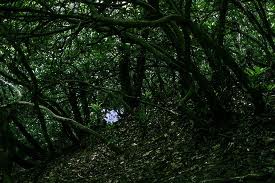The Blue Valley Experimental Forest was established in 1964. The purpose behind this forest was to study the habitat and growth of the white pine that dominates the some of the mountain sides in the southern Appalachians. Part of the reason this exact piece of land was chosen was due to the amount of decomposed granite that existed in the ground and what affects it might have on the white pine forests. The Blue Valley Experimental Forest is still a haven for researcher wanting to do research and experiments in pristine forest land.
 The white pine can be seen throughout the southern Appalachian mountains, the Blue Ridge Mountains and the Great Smoky Mountains. This hardwood tree is a native tree to the area that loves both the altitude and the climate of these mountain ecosystems. The white pine has adapted over time to people moving into the area, heavy logging in some areas and changes to the precipitation and resources in the ground as well.
The white pine can be seen throughout the southern Appalachian mountains, the Blue Ridge Mountains and the Great Smoky Mountains. This hardwood tree is a native tree to the area that loves both the altitude and the climate of these mountain ecosystems. The white pine has adapted over time to people moving into the area, heavy logging in some areas and changes to the precipitation and resources in the ground as well.
One of the reasons for choosing the Blue Valley Experimental Forest area was the amount of decomposed granite in the land itself. This decomposed granite has changed the chemical makeup of the land and it is termed as ‘infertile.’ In this area, the trees are suffering due to the harsh chemical content of the soil. Researchers are seeing what can be done to save this forest, they are studying the effects of the decomposed granite and this ongoing research is bringing them closer to understanding the way that this hardy, hardwood tree has survived and flourished in other areas in the Appalachians.
Currently, the researchers of the Blue Valley Experimental Forest are studying the effects of single tree selection and cutting and underburning. Single Tree Selection is the removal of trees that do not fit the structure of the forest. In other words, trees that are much older, or much younger than the rest of the forest are removed to bolster the rest of the forest. The theory being that a tree that does not fit the silviculture of the forest might be harming the forest as a whole. Cutting and underburning is the act of removing parts of the forest and burning out the forest floor to give the trees a better area to grow in. The Blue Valley Experimental Forest may, in time, prove to be the savior of the white pine forests in the state of North Carolina and in the southern Appalachians themselves.
